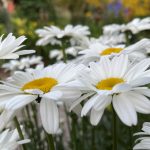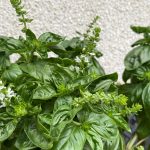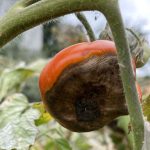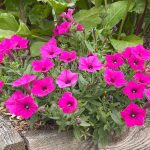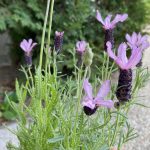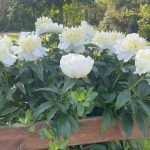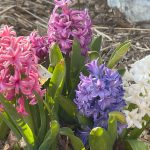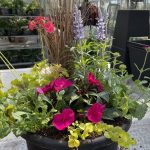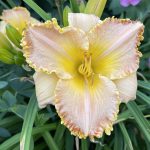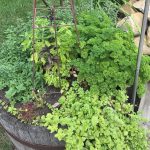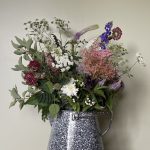Garden slug problems can be frustrating, and they can suck the joy out of gardening as they can quickly become an issue if not dealt with properly. If you’re wondering how to get rid of slugs, you’ve come to the right place.
Let’s talk about slugs and their management.
This blog will talk about:
- The Lifecycle of Slugs
- Where to Find Slugs Living in a Garden
- Telltale Signs that Slugs are in your Garden
- How Slugs Damage Plants
- Annuals and Perennials Plants Slugs Find Tasty
- Simple and Effective Strategies to Eliminate Slugs From Your Garden
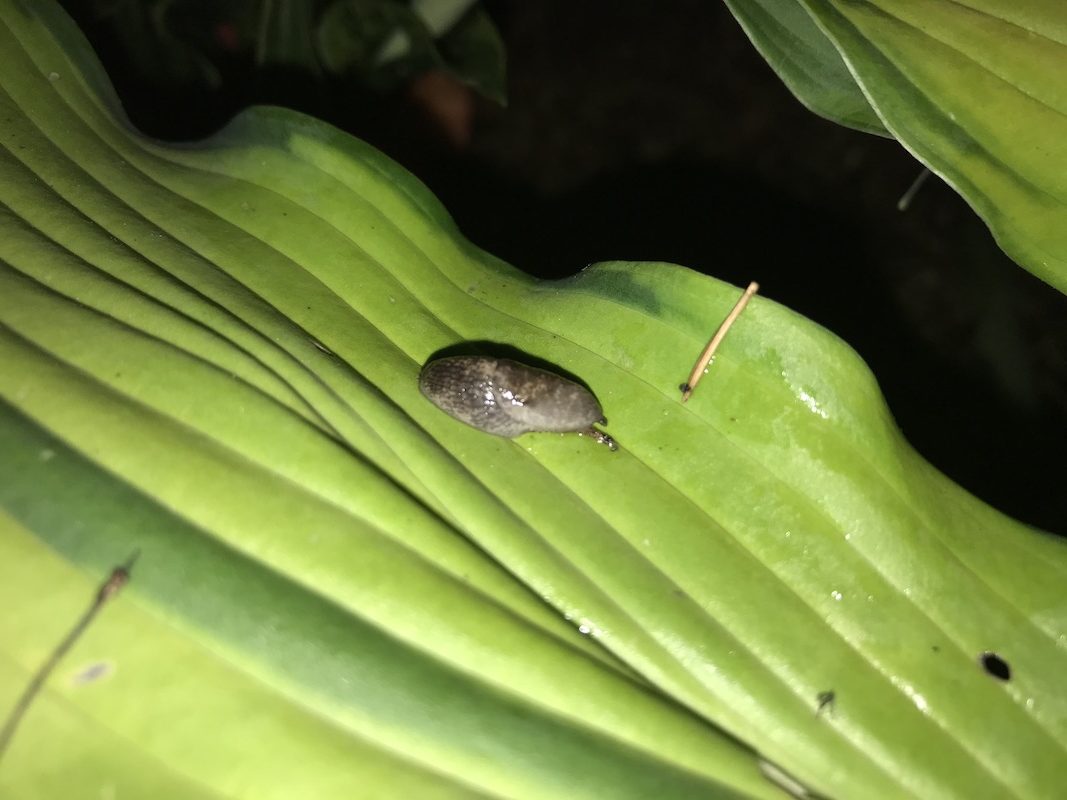
What are Slugs Anyways?
Slugs can be thought of as snails without shells. Slugs are legless, smooth, soft-bodied creatures with only one foot, called a monopod.
Most Alberta-grown slugs are shades of grey, brown, or a mottled combo of these two colours and range from .75 cm (¼”) to 2.5 cm (1”) in length. They are considerably larger in warmer areas of the world.
Slugs have 2 pairs of feelers, or tentacles, on their heads. The large set, located at the top, has eyes that sense light, and the lower, smaller duo is for smelling.
Slug bodies are covered with a multifunctional slime layer. The primary purpose is to keep their bodies moist. This layer also facilitates locomotion and protects them from predators.
This slime leaves a classic shiny trail that reveals where they’ve been travelling.
Maintaining this outer slime layer is critical to slug survival and drives their habitat choice.
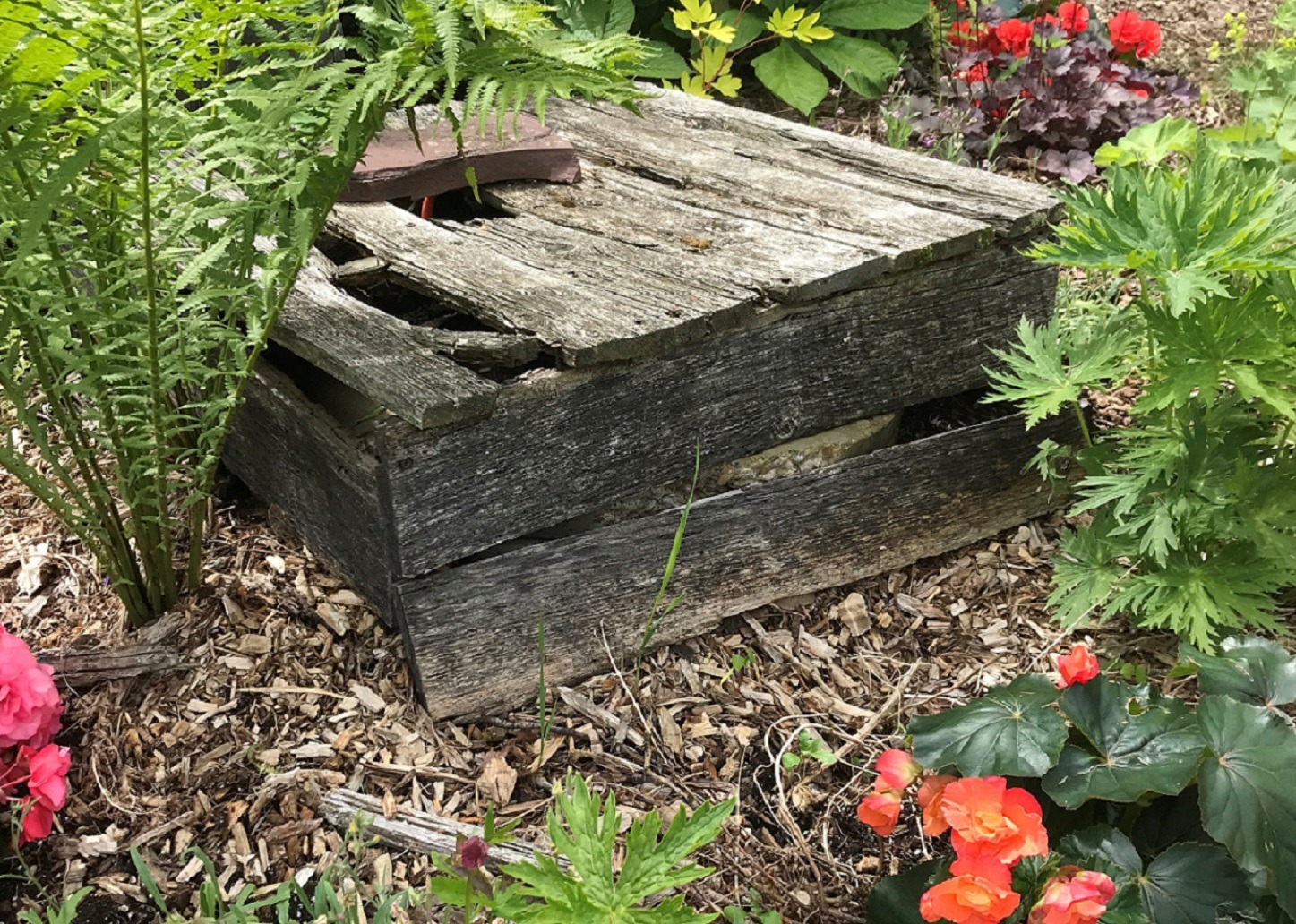
Slugs live in cool, damp, shady areas to keep their outer skin moist because it decreases the water evaporation rate from their skin.
Rendering this slime layer ineffective is one strategy gardeners can use to combat slugs.
Slugs are omnivorous and cannibalistic. They feed on green plants, particularly tender seedlings, ripening fruit, algae, and decaying plant material. They also eat insects, worms, carrion, fecal matter, and other slugs.
They have voracious appetites, with some species eating the equivalent of their body weight in a day.
The Lifecycle of a Slug

A slug’s life starts in an fertilized egg. Slugs mate both hermaphroditically and sexually.
The rest of the details about how and when slug eggs are deposited, and when and how they hatch are vary according to species.
Slug eggs can be translucent, white, or golden. And they are laid in clusters or singly and they can be laid anytime of the year. Species that lay their eggs in the fall position them in an area when they can overwinter safely for a spring.
Whenever the eggs are laid, maintaining moisture is vital. Slug eggs can be found in top layers of soil or under mulch, leaves, rotting plant material, logs, stones, old boards, and garden accents like pots, benches, or birdbaths where the environment stays moist.
Slug eggs are fascinating because they can stay in limbo for years, patiently waiting for conditions to be right for the young to come forth. Slugs don’t hatch in one big flush, but the young emerge as conditions become favourable. The scenarios for how slugs hatch, emerge, and grow vary widely from species to species.
Slug populations increase gradually through the growing season and peak towards the end of summer, and the rate at which slugs reproduce depends on the weather, increasing faster when the weather is damp.
Baby slugs are very vulnerable to predation from birds, snakes, beetles, spiders, amphibians, and other slugs. These threats are another reason mulch and old damp leaves are popular places for slugs, the cover is vital to their survival.
Adult slugs overwinter in topsoil layers, under mulch and old leaves.
Slugs don’t hatch in one big flush, but the young emerge as conditions become favourable.
Telltale Signs that Slugs are in Your Garden
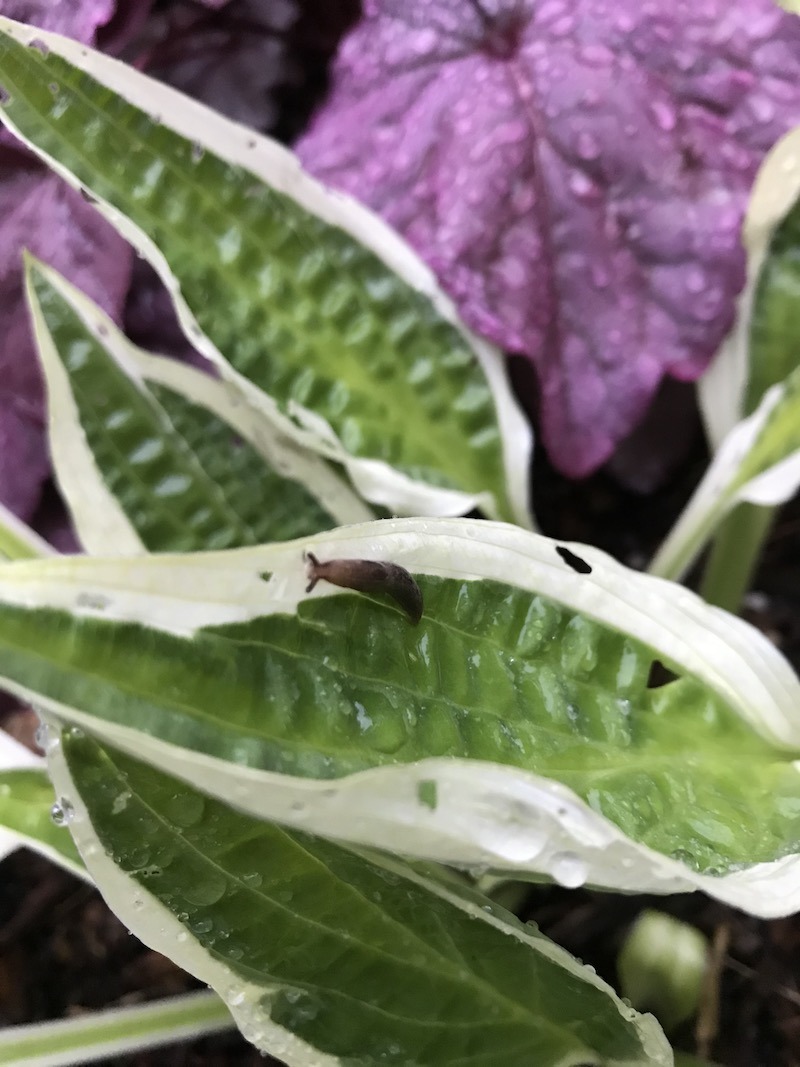
Shiny slime trails, irregularly shaped holes in leaves, scrape marks on stems and tough foliage, and excrement left behind on leaves are classic slug signs.
Simple & Effective Strategies to Get Rid of Slugs in Your Garden
There are several approaches to decrease garden slug populations. Try some of these in combination to make your efforts even more successful.
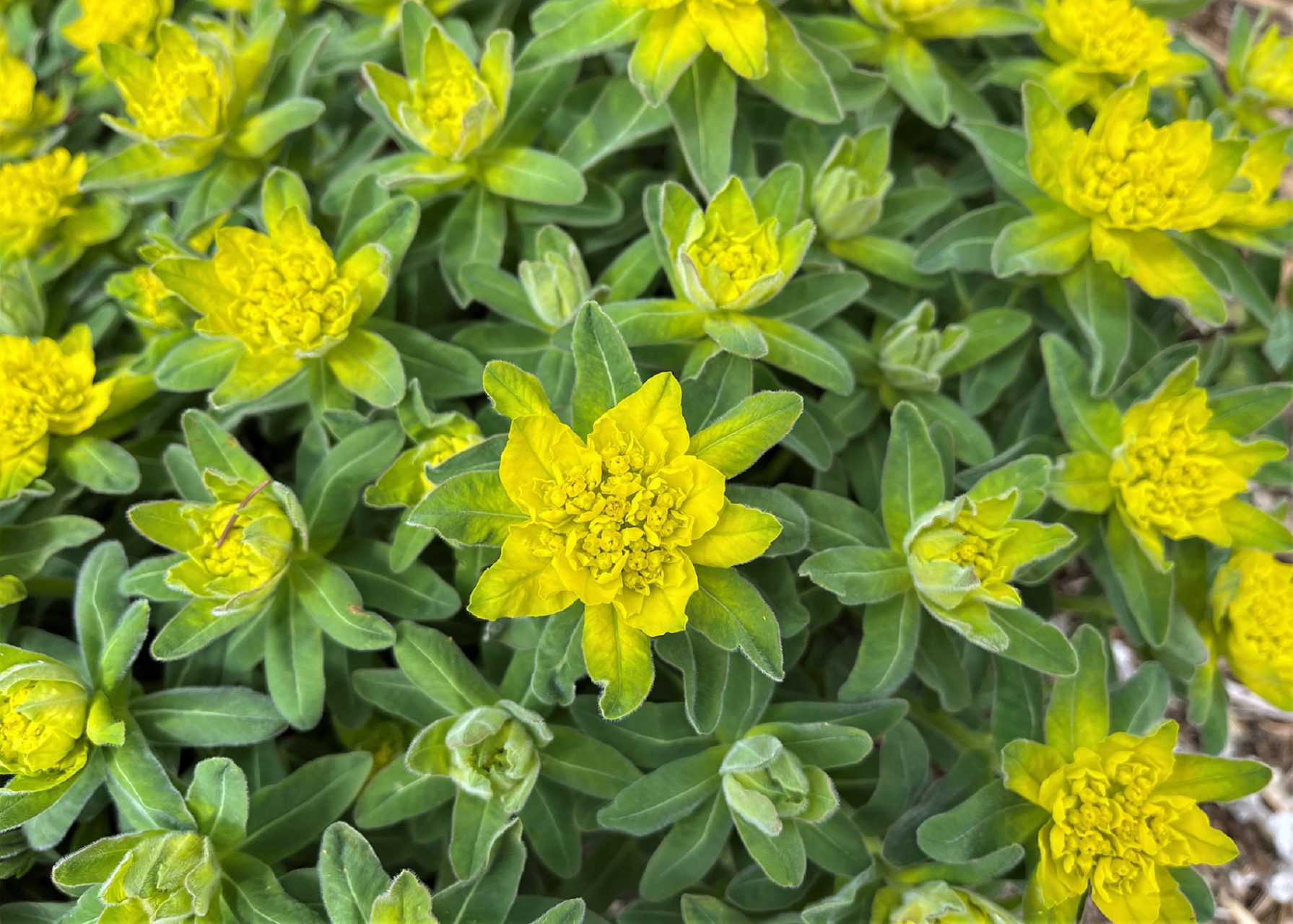
1. Incorporate Plants in Your Garden that Slugs Dislike
Preventing a slug problem before it starts by designing gardens with plants that slugs don’t like is an effective strategy.
Slugs will eat almost anything if their survival depends on it. However, slugs are not fond of highly scented plants, those with intense flavours, strong smells, milky sap, thorns, or tough fibres.
Annual & Perennial Plants That Slugs Don’t Like:
Annuals that slugs don’t like include Dianthus, Ferns, Lavender, Mint, Ornamental Grasses & Dracaena, Pelargonium (Annual Geranium), and Rosemary.
Perennials that taste or smell bad to slugs include Ajuga (Bugleweed), Aquilegia (Columbine), Artemisia (Silver Mound), Campanula (Bell Flower/Clips), Dicentra (Bleeding Heart), Digitalis (Foxglove), Euphorbia (Cushion Spurge), Ferns, Geranium (Cranesbill), Mint, Nepeta (Catmint), Stachys (Lamb’s Ear), and Polemonium (Jacob’s Ladder).
Perennial flowers that are difficult for slugs to chew include Astilbes, Ferns, Hemerocallis (Daylily), Ornamental Grasses, and Vinca. In addition, Phlox subdulata is too prickly for their soft bodies.
Related: How to Plan & Design a Garden in 4 Simple Steps
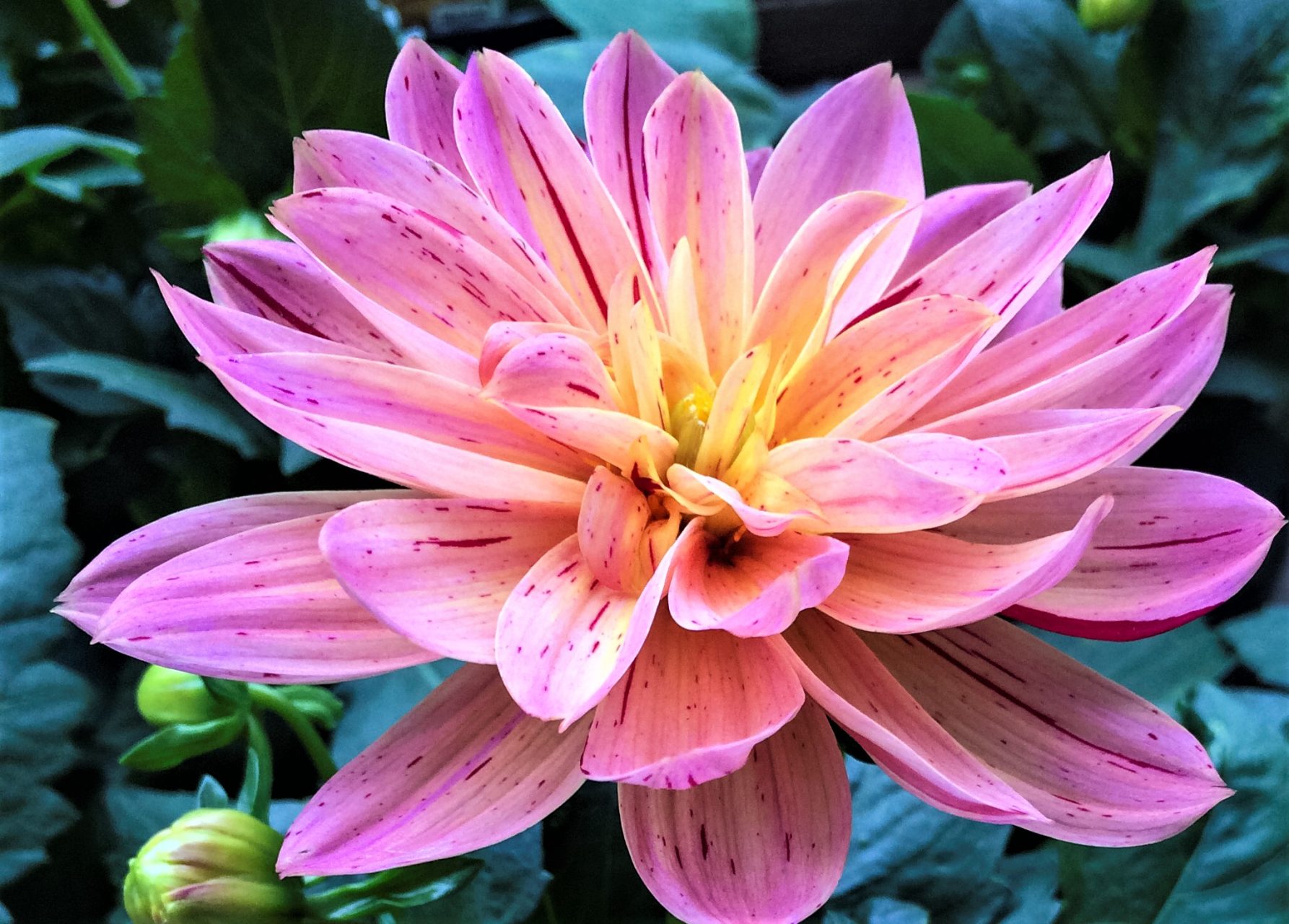
2. Plant ‘Trap Crops’ that Will Keep Slugs in One Place
Trap crops are plants that are grown to attract specific pests. The rationale for trap crops is that garden pests will spend their time with the plants they love and leave the other parts of the garden alone.
For example, if you would like to attract slugs, grow Begonias or Dahlias, and then you can get rid of the slugs caught.
Annual and Perennial Plants That Slugs Love
Slugs prefer tender, juicy greens that are easy to chew.
Annual plants that slugs are fond of include Begonias, Dahlias, Marigolds, Pansies, and Violas.
Slugs love these herbs, vegetables, and fruit: Basil, beans, cabbage, green leafy vegetables like beet greens, lettuce, spinach, and strawberries.

On the perennial flower scene, slugs are particularly attracted to thin-leaved Hostas, Doronicum (Leopard’s Bane), Brunnera (Siberian bugloss), Lilies, Pulmonaria (Lungwort) and perennial Violas.
3. Create Garden Environments that are Inhospitable to Slugs
Slugs must keep their outer mucous coatings moist, so they thrive in damp areas.
Incorporate materials and garden practices that reduce humidity and moisture to make your garden less slug friendly.
- Consider the Role of Mulch – Examine the pros and cons of mulch in your garden where slugs are living. Slugs do not like mulch with shredded wood components because it is too sharp for their monopod.
If you notice slugs thriving in a garden that has mulch, think about reducing the amount of mulch by just maintaining a little around the plant bases; or completely eliminating the mulch.
Related: What is Mulch? Making Garden Magic with Mulch
- Reduce Leaf Litter – Fallen leaves have the same effect as mulch. Leaves capture moisture from rain and retain it among the leaves and in the soil. Leaf litter is a favourite place for slugs to lay their eggs.
Consider removing leaf litter in the spring as a preventative step to decrease slug habitat where slugs are a problem.
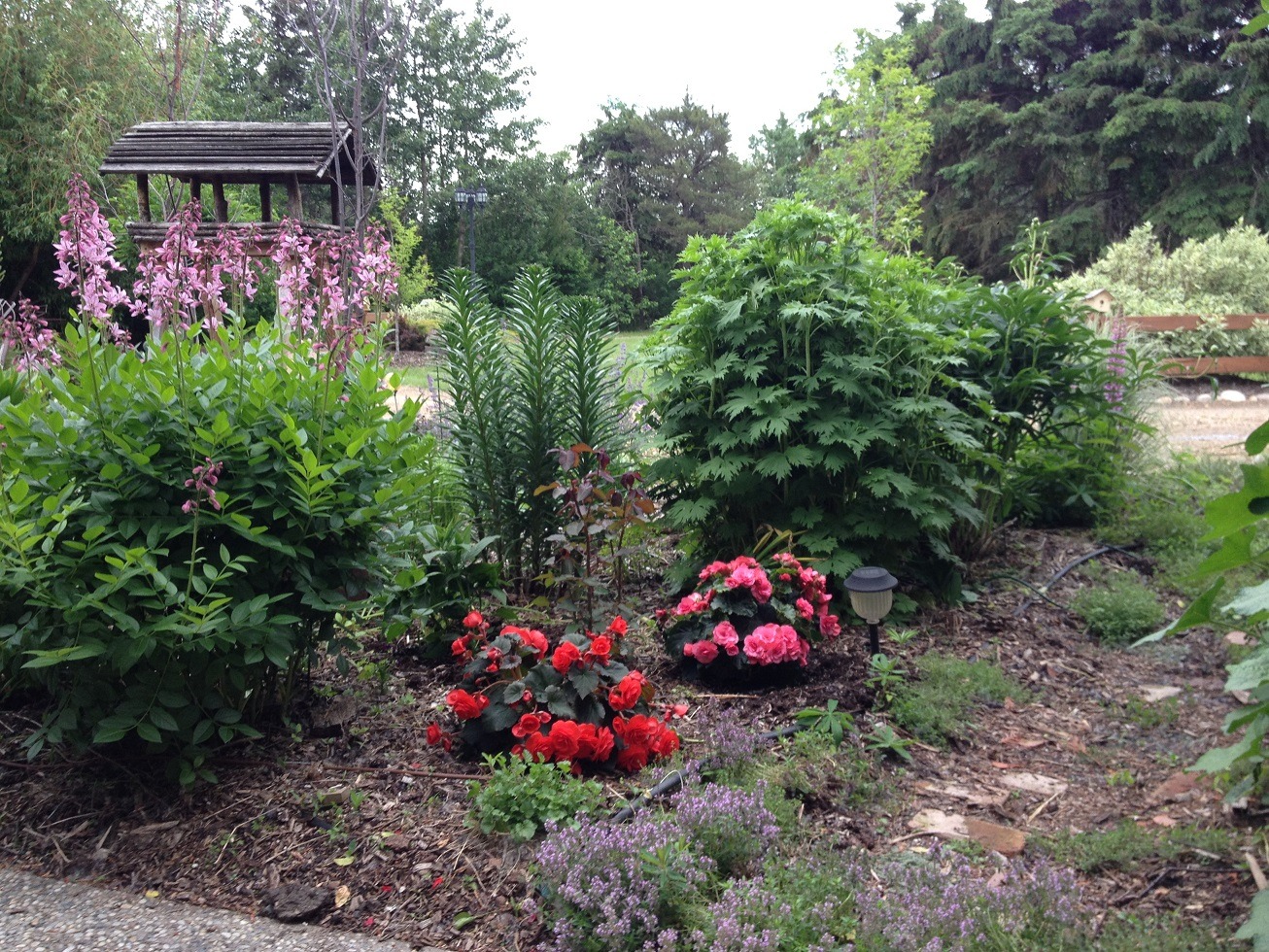
- Keep Gardens Tidy and Clean – Slugs love anything that will help the soil hold moisture.
Remove boards, wood chunks, stumps, stepping stones, old tires, and other materials that are prime for slug infestations, as slugs love to shelter, feed, and lay their eggs under these kinds of objects.
- Reduce Supplemental Watering – Check shade gardens regularly for hydration and water only when necessary to reduce excessive moisture in shady areas. Most shade gardens need very little supplementary water.
Water early in the morning so the garden can dry out during the day and avoid watering late in the day or evening.
- Craft Spaces with Good Air Movement – Thin out plants to improve air circulation to dry things down in damp areas.
Clearing out lower leaves on plant stalks to improve air circulation is an excellent place to start. Another good reason for scaling down lower leaves is that it makes it more difficult for slugs to hop up on plants.
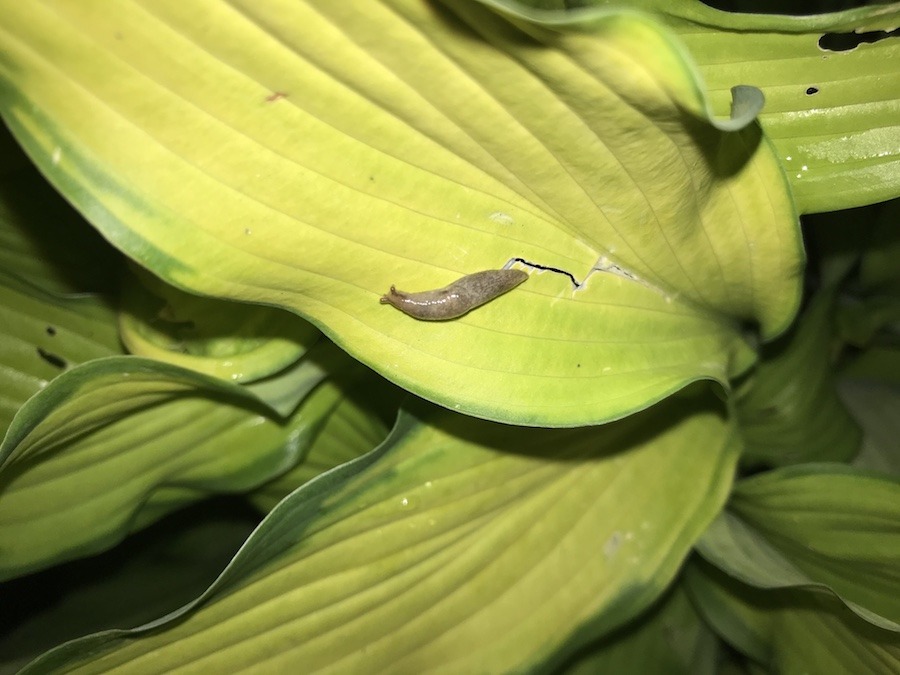
4. Track Down Slugs and Eliminate Them
Slugs leave clues that they’ve been around and they can be found a few different ways:
- Slugs can be found early in the day by tracking their shiny slime trails.
- Another favourite morning slug spot is where plant stems intersect with the soil, and hanging around on the lower leaves. Check both the upper and dorsal sides of the leaves.
- Slugs are nocturnal and get bold at night. They will crawl up plant stems and feed on upper leaves. Some slugs feed on the leaf tops, and others on the dorsal (bottom) sides.
- Slugs can be tracked at night or dusk with a flashlight or headlamp.
Handpick slugs off with gloves and dispose of them.
Slugs are scavengers and get involved with decaying plant and animal material loaded with bacteria or parasites that may be harmful. Always use gloves and be sure to wash your hands well afterward.
Spray Slugs with a 20% Ammonia Solution – this is my favourite weapon against slugs!
The ammonia strips the slug’s protective mucous layer, and they die immediately.
This mixture doesn’t harm plants or other creatures, and eliminates handling slugs with your hands.
20% Ammonia Solution Recipe: Measure 1 part of regular household cleaning ammonia to 4 parts of water.
5. Slug Traps and Barriers
Slug traps can be purchased commercially or homemade.
A slug trap can be made by digging a shallow dish into and flush with the surrounding ground so slugs can enter easily.
Then place the bait, like cucumbers or cheap yeasty beer, into the dish and during the night and slugs will come to feed, but they aren’t able to climb out.
Slug barriers keep slugs from getting onto plants by creating a rough or prickly surface that irritates and damages their bellies and feet.
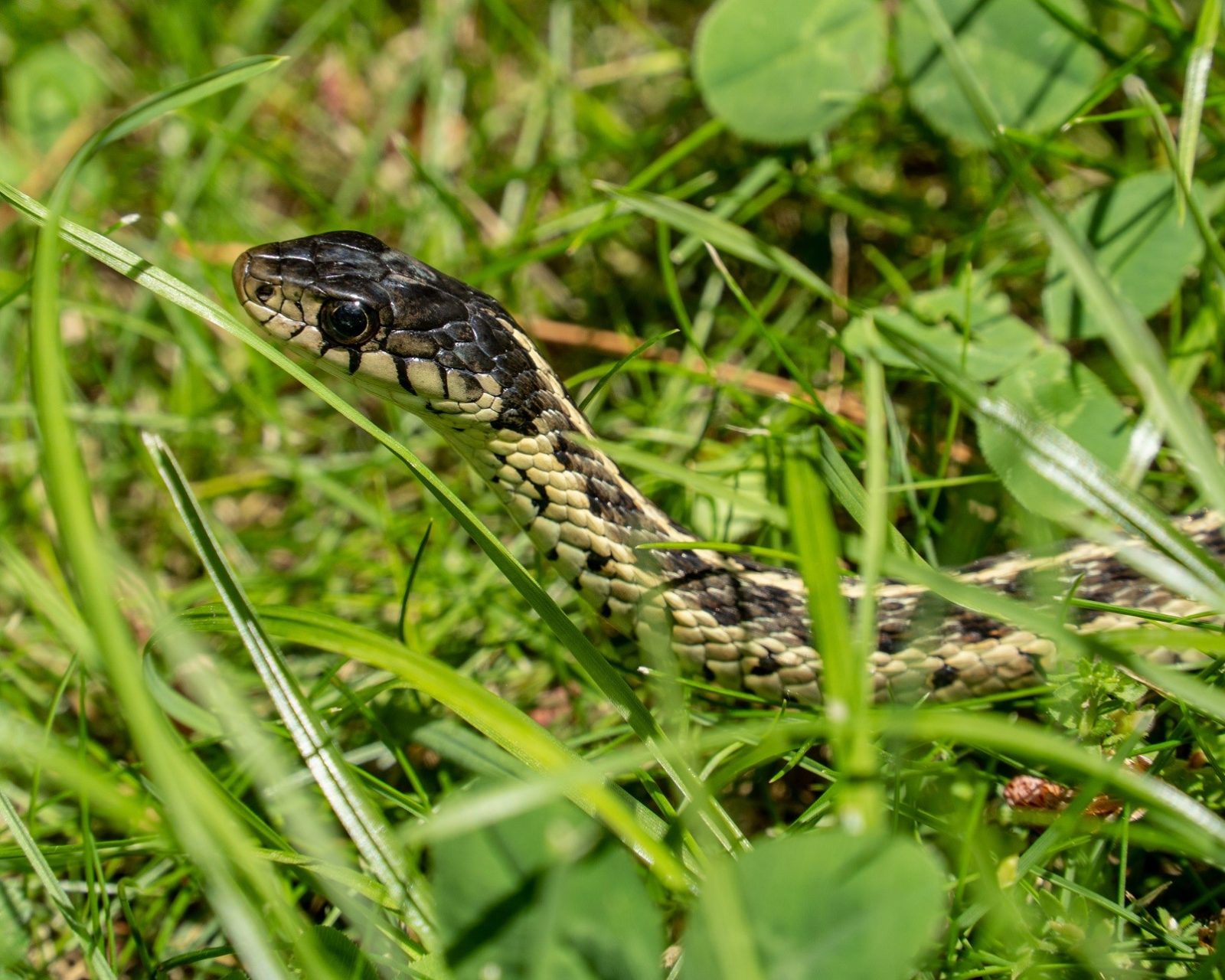
6. Encourage Natural Predators of Slugs
Slugs have natural predators such as beetles, spiders, amphibians like frogs & snakes, chickens, ducks, and other birds.
Grow a variety of annuals, perennials, and vegetables to provide habitat for slug predatory species.
Adding a bird feeder and bird bath encourages birds to visit your yard regularly.
7. Commercial Slug Repellants
There are commercial slug bait formulas, called mulluscicides, on the market for purchase.
When considering these alternatives, check that the animals that feed on slugs will not be negatively affected by them.
In the long run, natural solutions like those mention above, are very effective, so chemical use isn’t necessary.
Some Last Thoughts on De-Slugging Your Garden
Slugs can really put a damper on your gardening experience. They aren’t nice to look at and they can eat some of your favourite plants!
Incorporating the right plants, making gardens less hospitable to them, and combining other natural strategies to decrease slug populations can successfully reduce their populations.
©Sharon Wallish Murphy ©Gardening with Sharon


